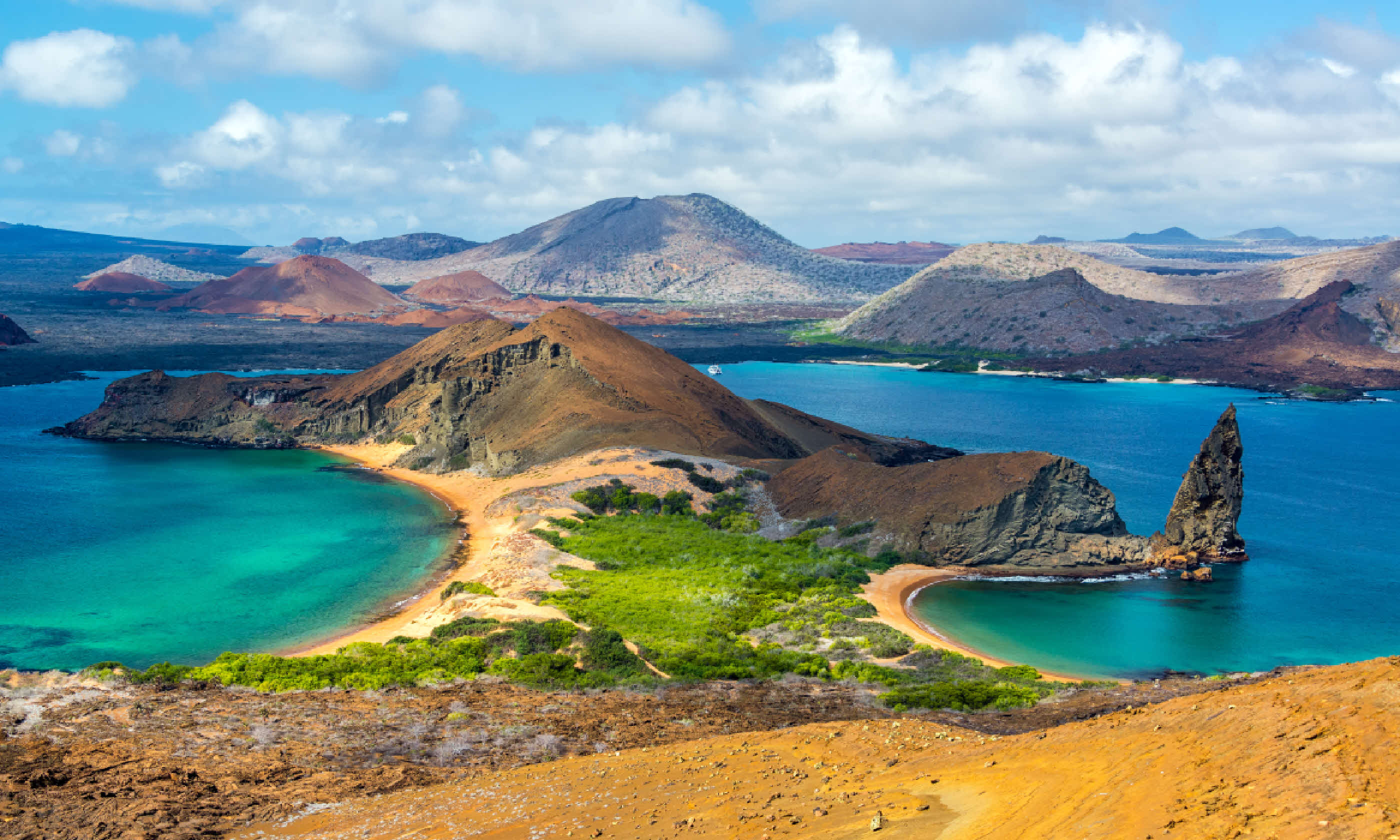
South America trip planner: 8 incredible routes
Whether you want to hike the Andes, self-drive Brazil, delve into the Guianas or take the train to Machu Picchu, these eight journeys will inspire a Latin adventure
Southern Patagonian Andes: Argentina & Chile
Duration: 10 days
Best for: Hiking, biking, glaciers and off-road adventure
Route: El Chaltén > Lago Argentino > Puerto Natales > Torres del Paine
The southern Patagonian Andes are as spectacular as any landscape in South America. The main mountain chain is relatively low, and two iconic massifs – Fitz Roy and Torres del Paine – provide a backdrop for superb camping and wilderness walking. The best time to go is during the austral summer and shoulder seasons (October to March).
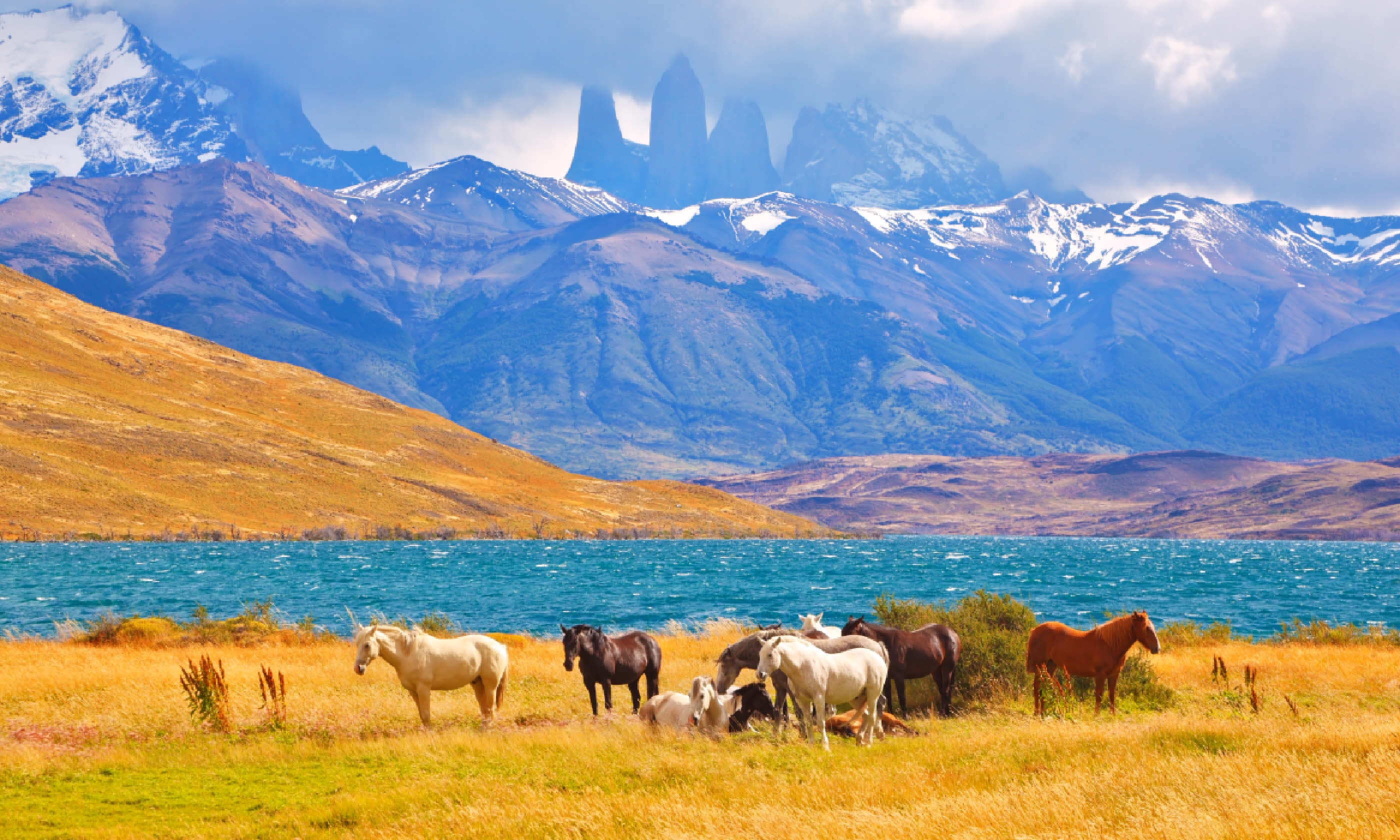 Horses and Torres del Paine
Horses and Torres del Paine
Starting out from the small backpacking hamlet of El Chaltén, it’s an eight-hour round trip on a well-marked footpath up to the Laguna de los Tres for a superlative view of Mount Fitz Roy. It’s possible to pitch a tent at Campamento Poincenot if you prefer to do this over two days. El Chaltén, while tiny, has some good hotels as well as cool bars and small restaurants.
Getting to Lago Argentino involves a road transfer, taking in a short section of the Ruta 40 – Argentina’s most famous highway. Once there, take a good look at the Perito Moreno glacier from the raised walkways, before heading to Puerto Bandera for a boat ride to the glacier’s edge; here, put on crampons to explore the edge of the Southern Ice Field.
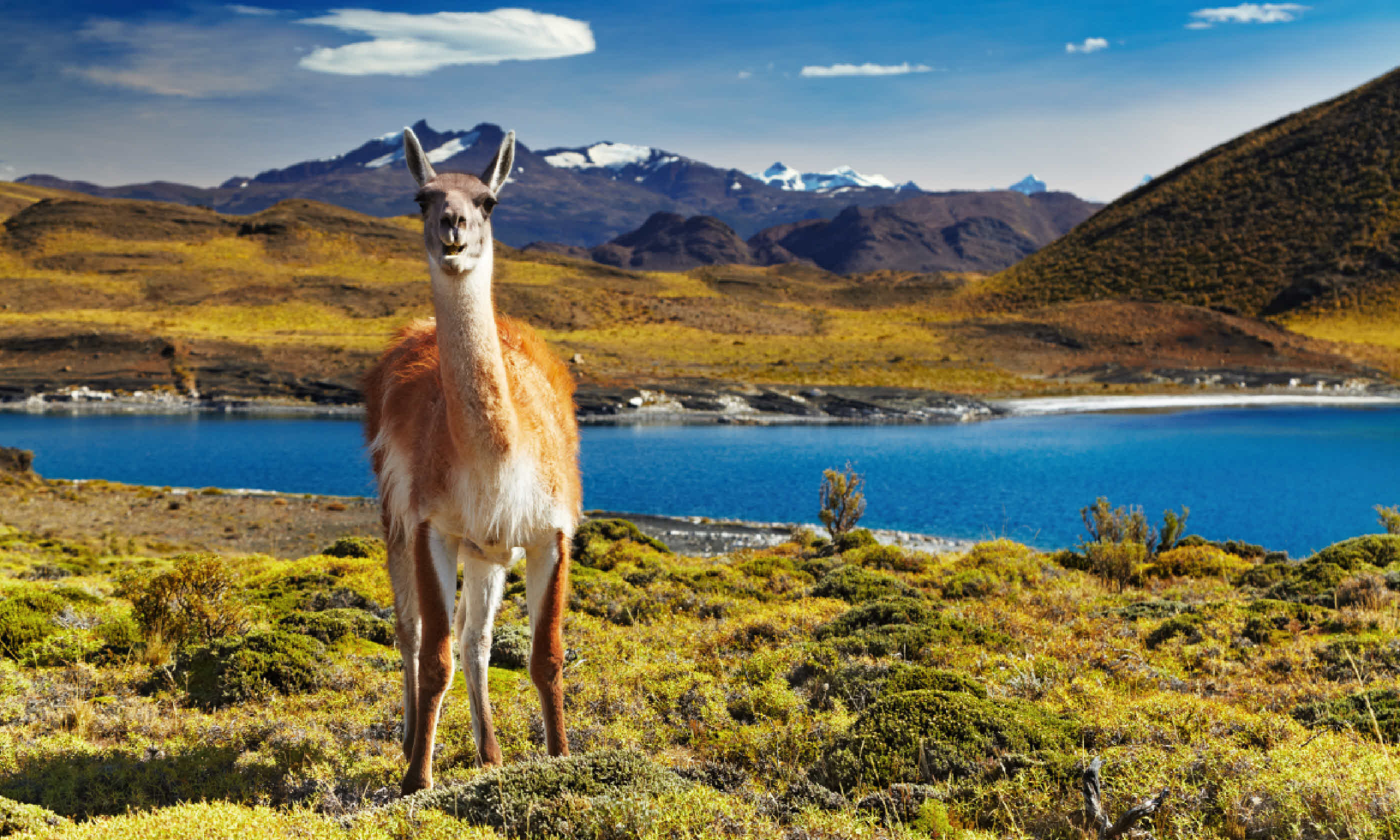 Guanaco in Torres del Paine National Park (Shutterstock)
Guanaco in Torres del Paine National Park (Shutterstock)
El Calafate, 50km east of Puerto Bandera, has a range of good-value accommodation and campsites, plenty of good steakhouses and pizzerias, and good connections to other destinations. Estancia-style luxury hotels such as Eolo, Nibepo Aike and Hostería Alta Vista are the more inviting alternatives, if your budget allows.
From El Calafate, take a minibus to cross the Argentina/Chile border at Rio Turbio and, after a pit-stop in lively Puerto Natales, transfer to Torres del Paine where walking options abound. The most popular four/five-day walk is the W circuit (because it looks like a W on the map), which takes in Lago Grey’s impressive glacier, the dramatic Valle Frances and, of course, the ‘Towers of Paine’ – the granitic monoliths used in a thousand brochures.
Inca heartland: Bolivia and Peru
Duration: 7-10 days
Best for: Indigenous culture and cuisine, ancient ruins, short hikes
Route: La Paz > Copacabana/Lake Titicaca > Puno-Cuzco > Machu Picchu
Visit the heartland of the Inca peoples and their descendants, the Quechua and Aymara nations of Bolivia and Peru. Travelling across the altiplano (high plain) opens up some of the Andes’ most dramatic landscapes – and that thin mountain air will give you dreams worthy of a shaman.
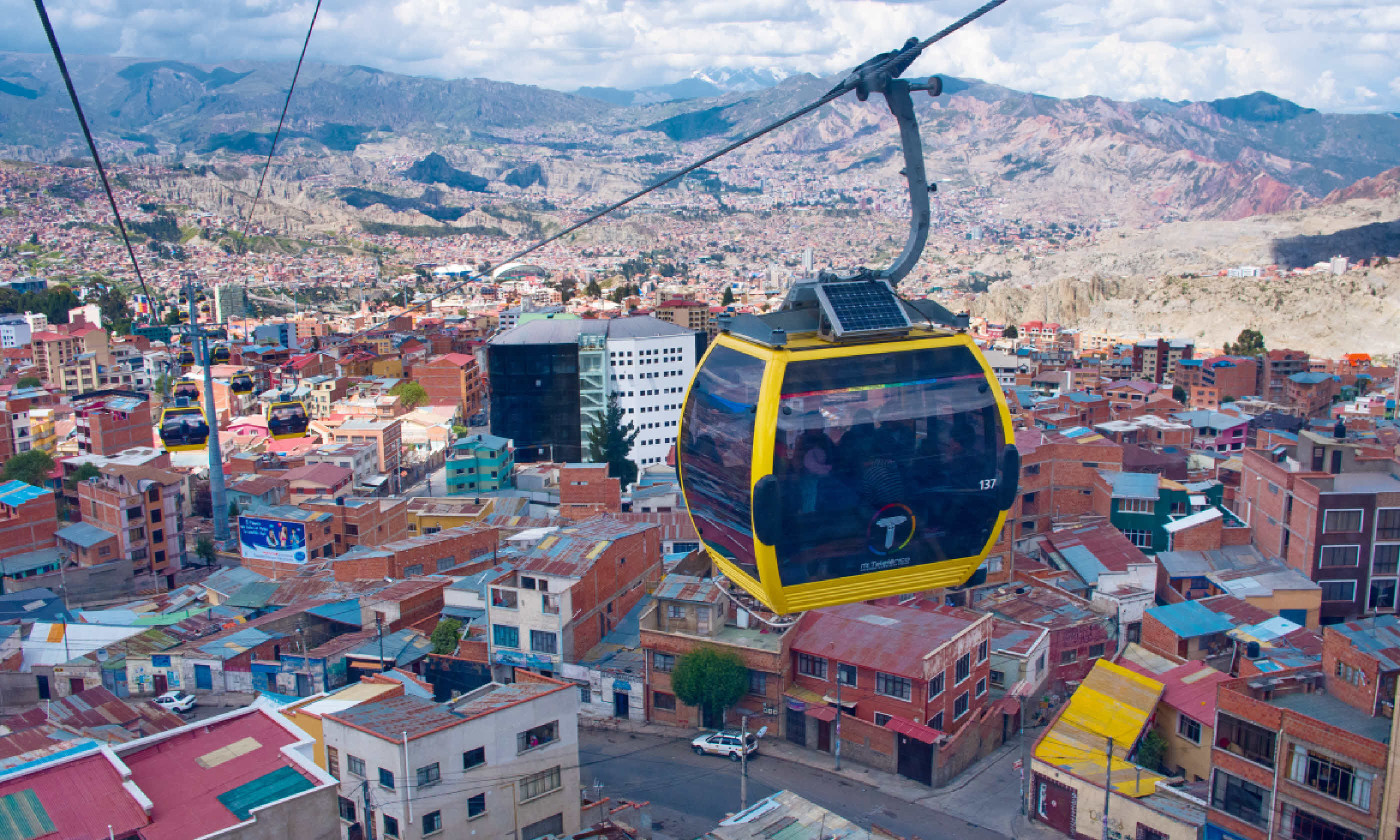 La Paz cable car
La Paz cable car
Occupying a wide bowl beneath the Illimani mountain, La Paz is a spectacular city. Here, skyscrapers nuzzle indigenous markets and it’s easy to fill up on Andean music and cuisine: healthy quinoa and amaranth, the maize-based drink of
chicha morada, alpaca meat and grilled guinea pig are all key ingredients of the Incaic menu.
The bus trip to Lake Titicaca passes through the town of Copacabana, a simple lakeside resort with a notable 16th-century basilica; take a day trip out on to the lake – the highest navigable body of water on earth – to hike on the car-free Isla del Sol, site of several pre-Columbian ruins. From Puno, on the Peruvian side of the lake, there are boat trips to the man-made totora-reed islands, built by the indigenous Uros.
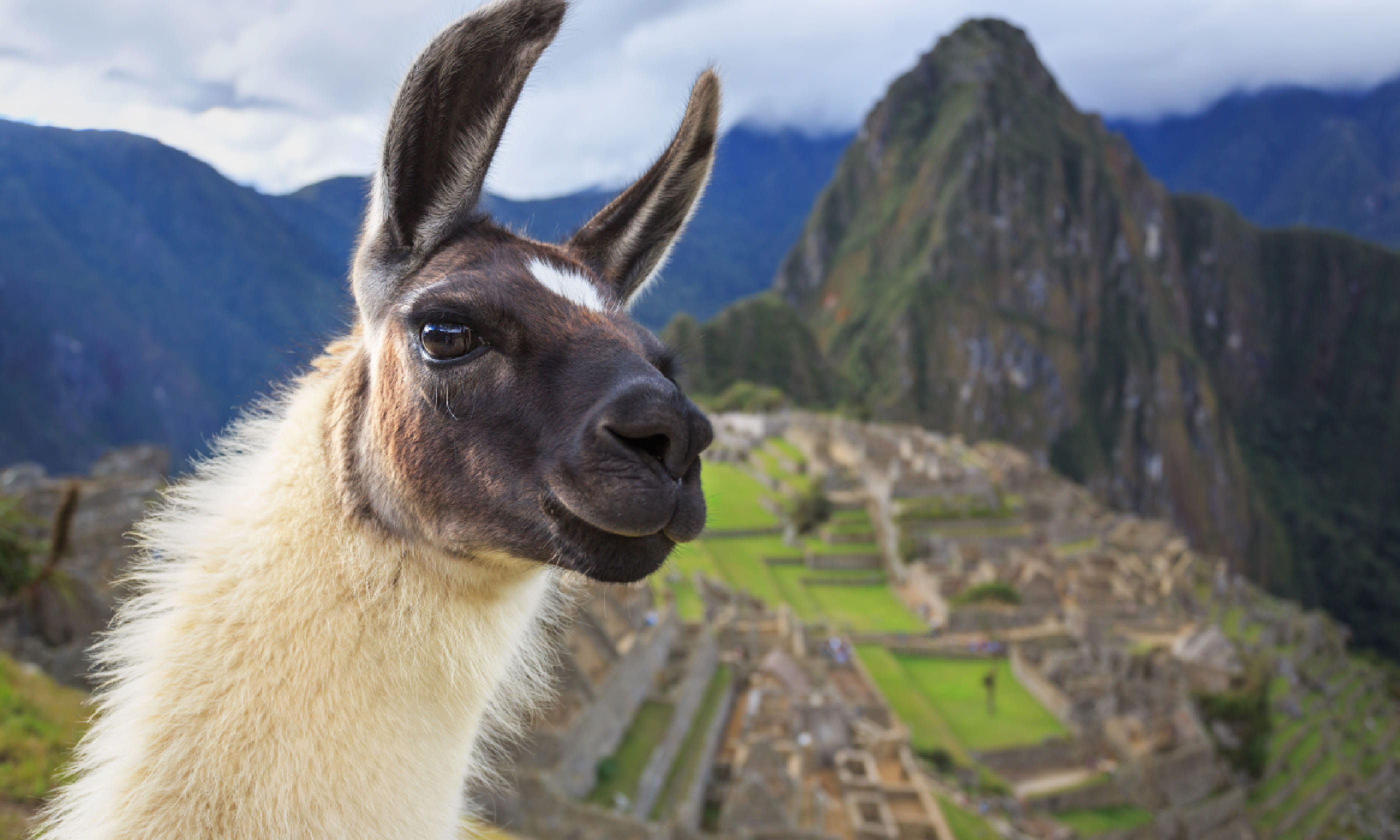 Machu Picchu, Peru (Shutterstock)
Machu Picchu, Peru (Shutterstock)
PeruRail runs a rail service from Puno to Cuzco, and there are also regular buses. The journey over the altiplano opens up views of distant mountains and volcanoes, bare deserts and steppe-like plains where vicuña and alpaca graze. Cuzco, the Inca’s ‘navel of the world’, has the region’s best hotels, as well as fusion restaurants, cool bars and engrossing museums detailing the compelling local history.
The next step is Machu Picchu itself and unless you’re planning on doing the four-day Inca Trail or a longer hike, the best option is to buy a ticket on the Poroy-Aguas Calientes railway, operated by PeruRail, and enjoy the Sacred Valley through one of the big windows of the
Vistadome train; those after some luxury can opt for the Belmond-managed
Hiram Bingham train.
Under the volcanoes: Ecuador & the Galápagos
Duration: 10-14 days
Best for: Wildlife, landscapes, railways
Route: Quito > Valley of the Volcanoes > Latacunga > Riobamba-Guayaquil > Galápagos Islands
The trip from the Ecuadorean highlands down to the balmy coast is a well-trodden one. It can be done by private car or minibus, on a public bus or – since 2013 – aboard a new rail service called the Tren Crucero (a combination of miniature train and proper train), which transports 54 passengers across 450km over four days, allowing for leisurely stops en route.
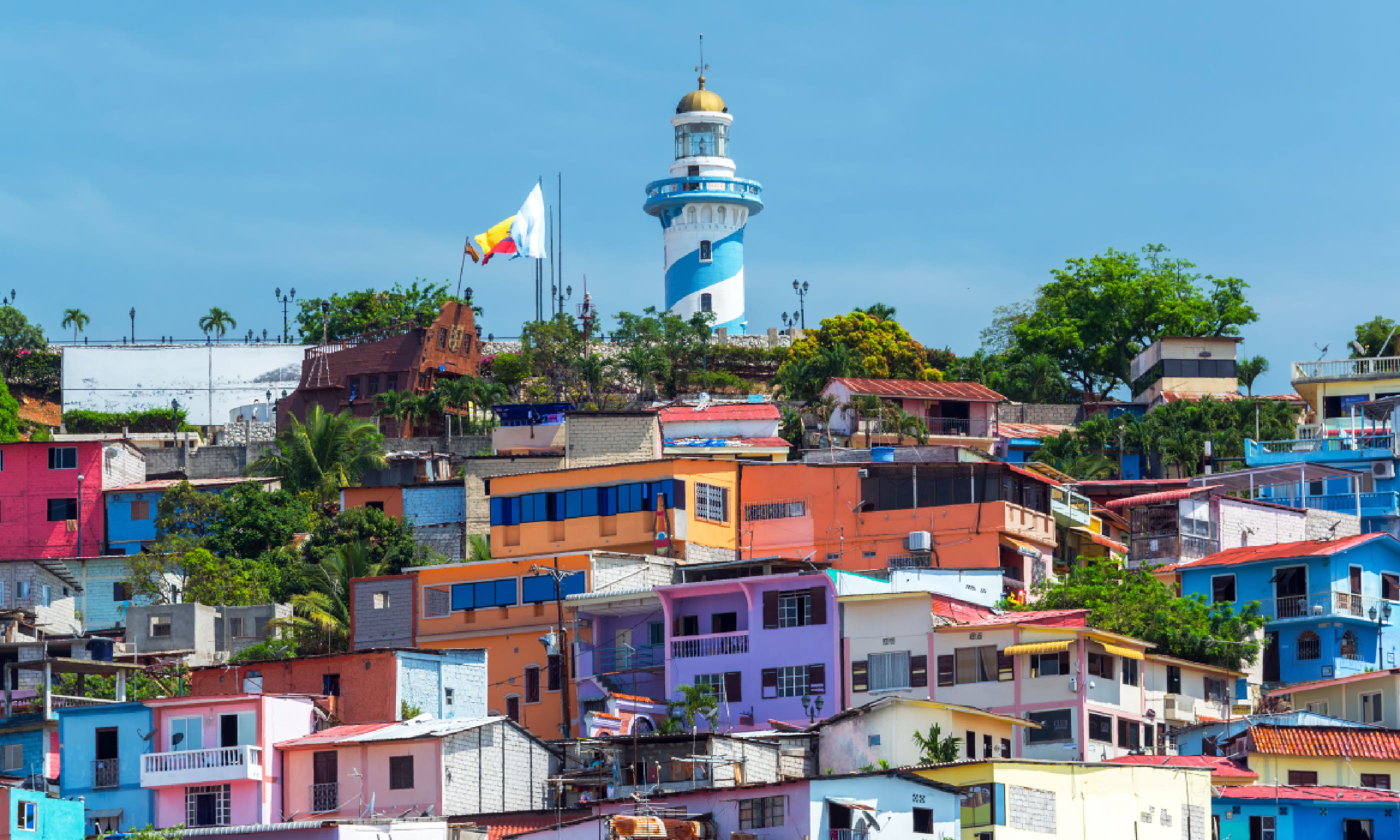 Guayaquil, Ecuador (Shutterstock)
Guayaquil, Ecuador (Shutterstock)
Quito is an iconic city with a beautiful historic core and some fine museums. Whichever transport option you take from here to the coastal city of Guayaquil, you’ll take in: active Cotopaxi and the so-called Valley of the Volcanoes, just south of Quito; the charming market town of Latacunga; Riobamba, with its strong indigenous identity; and Urbina, which at 3,609m above sea level, boasts the country’s highest railway station.
Eventually the road/rail descends through the tropical lowlands and the ranching coastal plains to arrive in Guayaquil, a busy, chaotic city, with a wonderful plaza populated by hundreds of iguanas.
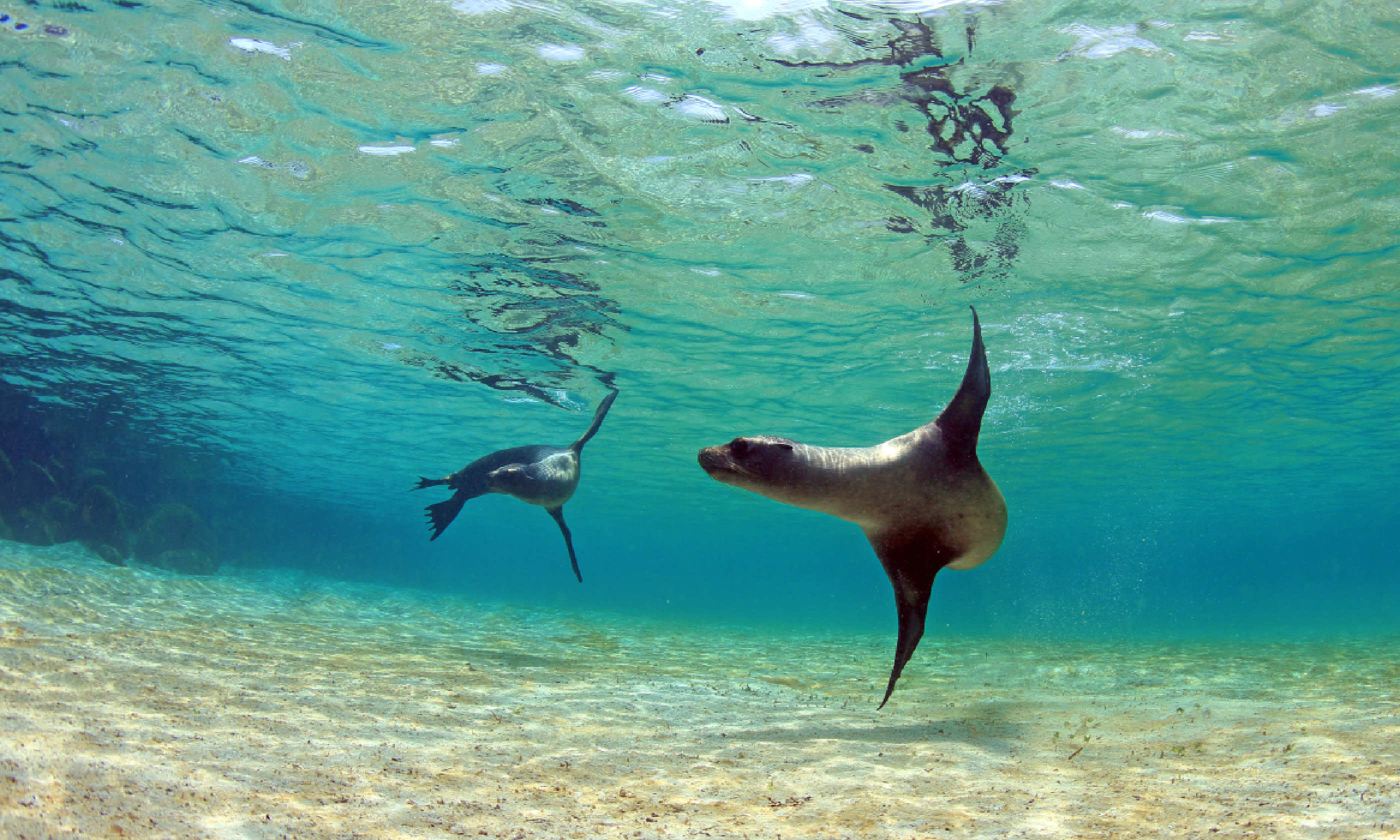 Sea lions in the Galapagos Islands
Sea lions in the Galapagos Islands
It’s just under a two-hour flight to the Galápagos, where there are sea and land options for those keen to see the local Big Five: giant tortoise, marine iguana, Galápagos penguin, blue-footed booby and flightless cormorant. Oh, and then there are the land iguanas, red-footed boobies, green turtles, lava lizards...
The volcanic islands offer arguably the best wildlife watching outside Africa; how you experience them is a matter of budget. A three-day stay on Isabela or Santa Cruz islands (both close to the airport) suffices to see the key species but a week-long cruise opens up the marine life and outer islands.
Costa Verde: Southern Brazil
Duration: 5 days
Best for: Beach culture, gastronomy, colonial architecture, self-drive
Route: Santos-Guarujá > Ilhabela > Ubatuba > Catuçaba > Paraty > Ilha Grande > Rio de Janeiro
If you’ve got a month free, you can drive Brazil’s entire coastline, but the 600km section from Santos to Copacabana beach opens up some of the most beautiful sections of the (threatened) Atlantic forest as well as a convivial town, idyllic islands, a colonial treasure and South America’s most romantic city.
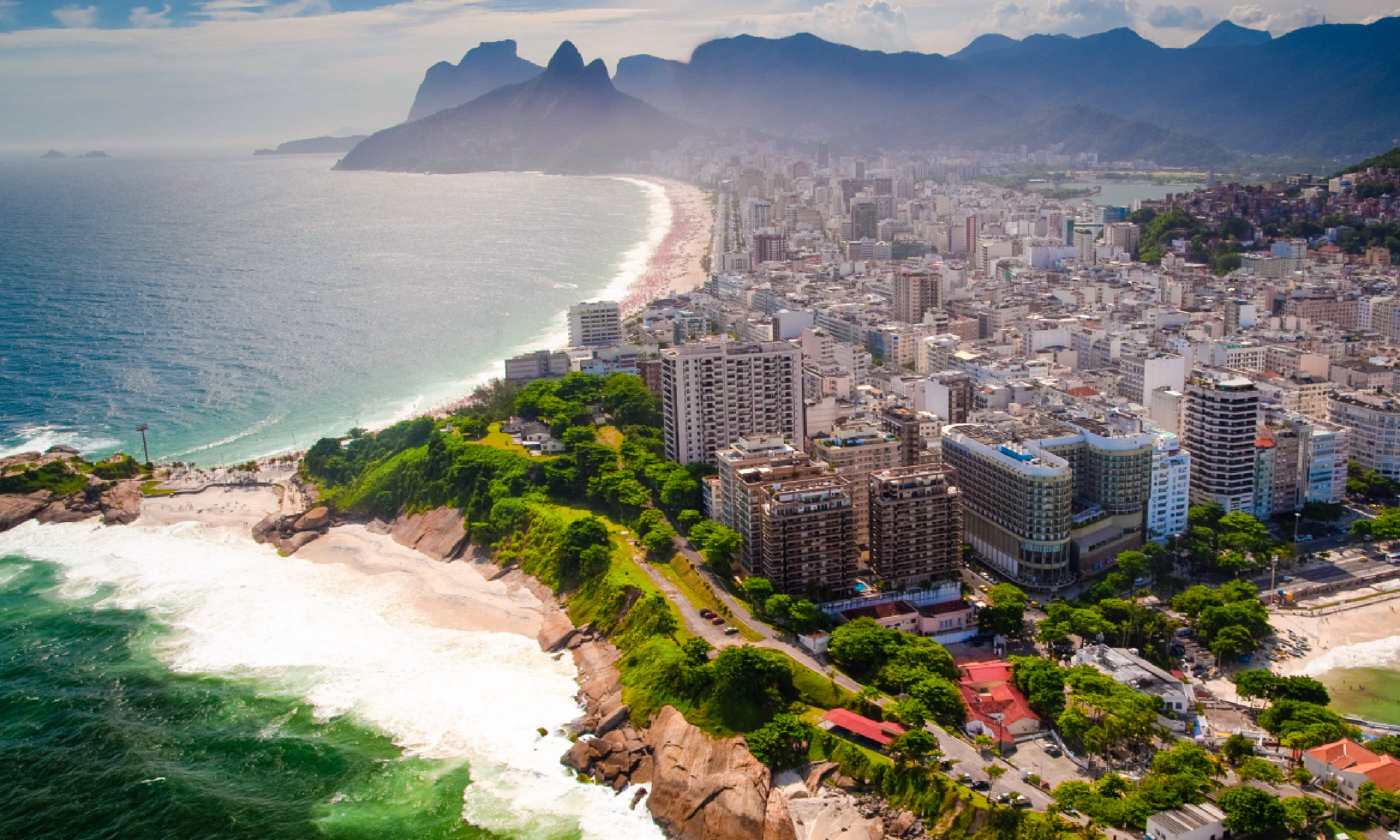 Copacabana Beach, Rio de Janeiro
Copacabana Beach, Rio de Janeiro
Santos is famous for two things: having Brazil’s biggest port, and for nurturing a footballer named Edson Arantes do Nascimento, aka Pelé – to whom the city’s Museu de Futbol, housed in the old FC Santos stadium, is dedicated.
Spend your first night on Guarujá, an attractive island resort, before setting off on your self-drive up the BR101. The first stop, Ilhabela, reached by ferry, will give you a glimpse of how São Paulo’s beautiful people party. At Ubatuba, the road climbs up through the Serra do Mar mountains to Catuçaba, where the local
fazenda (ranch) allows an opportunity to breathe cooler, cleaner air and kick back with a book – or ride a horse across the hilltops.
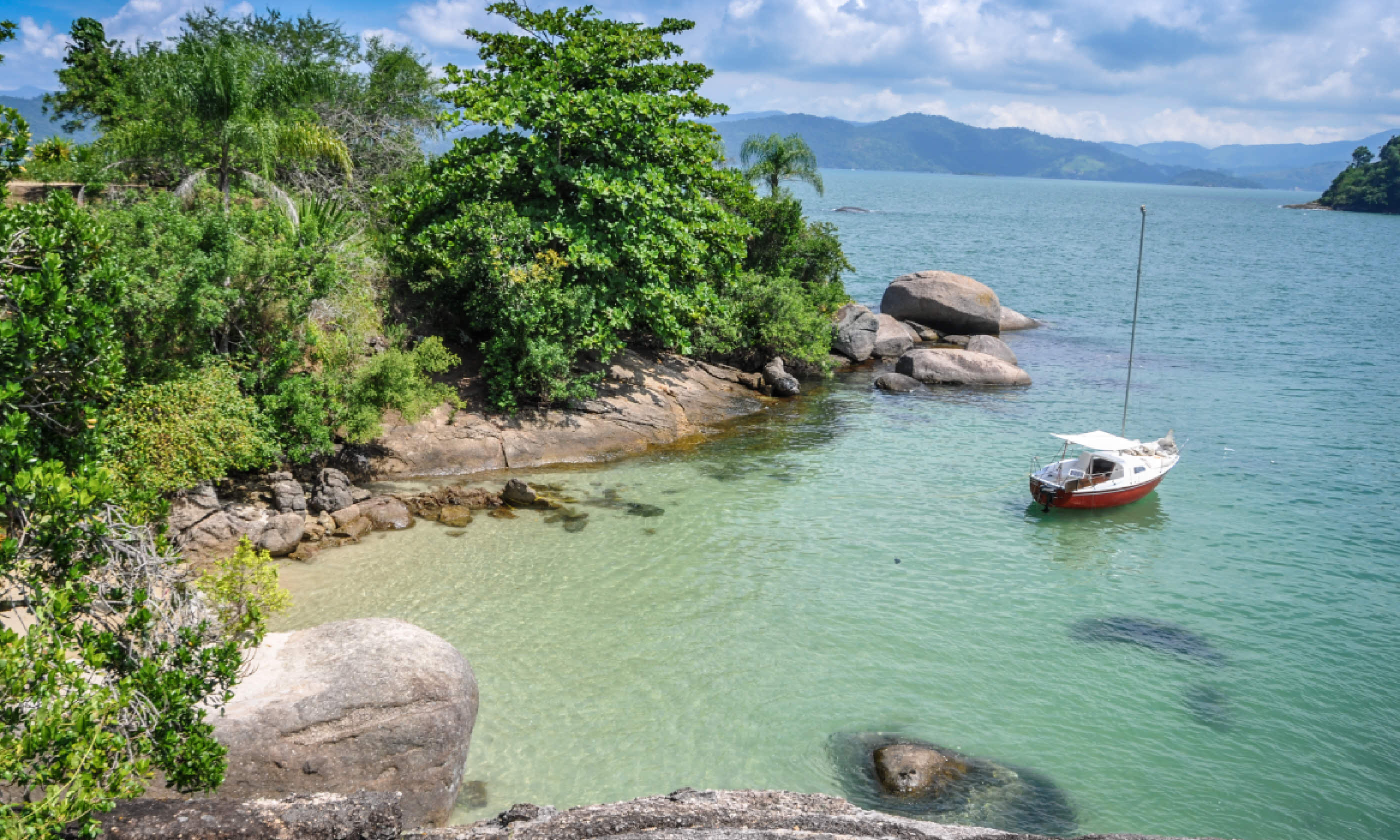 Sailing Brazil (Shutterstock)
Sailing Brazil (Shutterstock)
Paraty is southern Brazil’s prettiest city, combining a picturesque colonial centre – and many boutique hotels – with some beautiful nearby beaches. A favourite with honeymooners, it is swooningly romantic, and the dining is top-notch. Catch the ferry from Angra dos Reis to Ilha Grande, a completely traffic-free verdant island where there is some easy hiking around the edge of the forest, hopping from beach to beach.
The arrival in Rio is predictably heady, with throbbing traffic and dramatic views of the city’s famous favela-clad granite
morros (hills) until, suddenly, the emblematic –and enticing – beaches appear on the right-hand side: Leblon, Ipanema and Copacabana.
Birdlife on the wild side: Colombia
Duration: 10 days
Best for: Birdwatching, wildlife, photography, cities
Route: Bogotá > Chingaza Natural NP > Pereira > Jardin > Medellín > Santa Marta
Colombia boasts a staggering 1,900 bird species – or 18% of the world’s species. Even non-specialists can spot a multi-hued array of toucans, tanagers, parrots, woodpeckers, hawks and hummingbirds. But the diversity of avifauna is matched by its landscape: the Andes divides into three separate chains here, making much of Colombia mountainous; other habitats include Caribbean and Pacific coastlines, Amazon rainforest and the Llanos (plains).
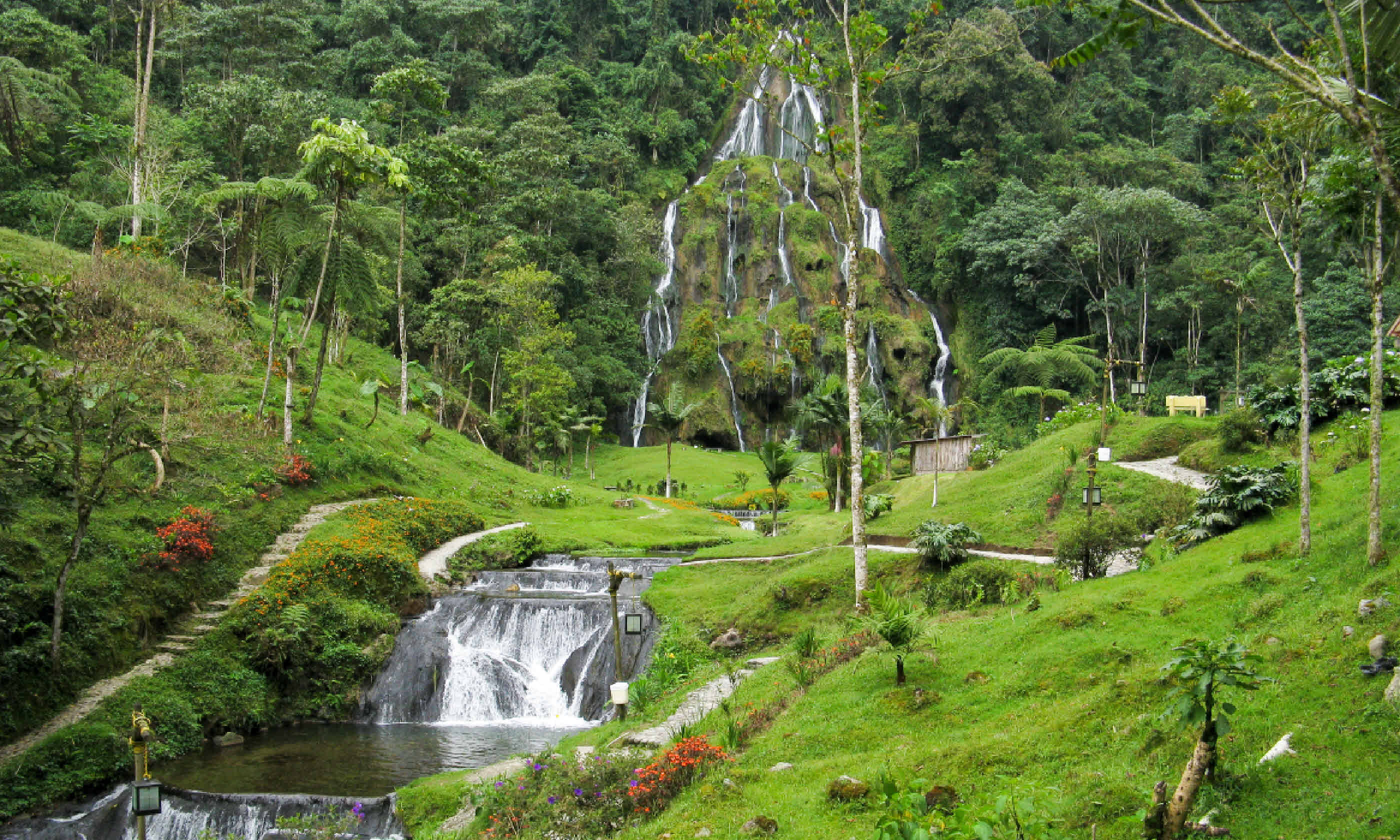 Santa Rosa de Cabal, Colombia (Shutterstock)
Santa Rosa de Cabal, Colombia (Shutterstock)
Bogotá is one of South America’s most underrated capitals, with a super gold museum and, in La Candelaria, a well-preserved historic centre. Arrive on a Saturday so you can spend the Sunday cycling on the city’s briefly car-free avenues – a much-copied weekly tradition.
It’s an easy drive north-east to Chingaza NP, which comprises montane forest, lakes and
páramo (moorland). Endemic birds include the brown-breasted parakeet, rufousbrowed conebill and bronze-tailed thornbill. A flight up to Pereira allows for a stay in the country’s ‘coffee triangle’; horseride at a hacienda and enjoy a tasting session.
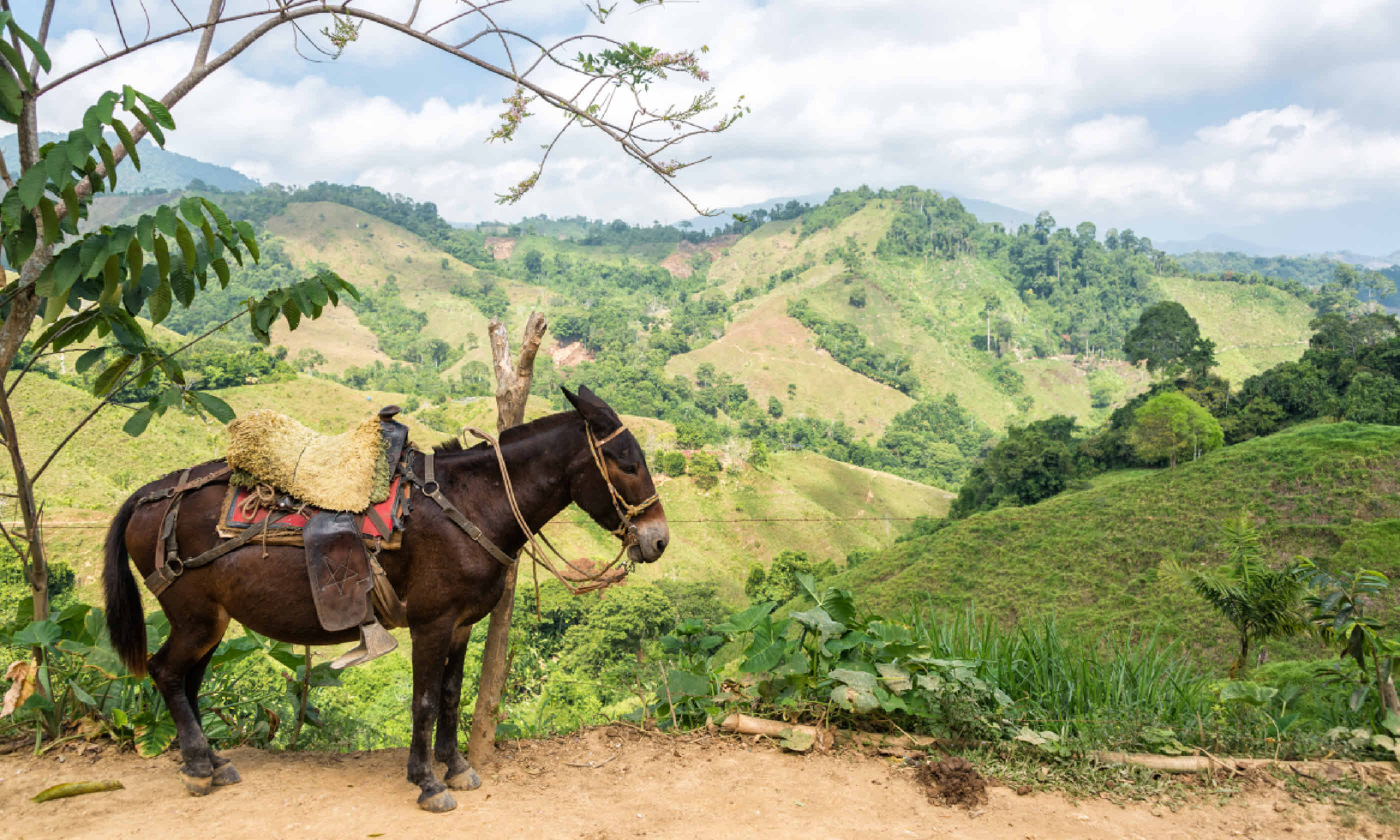 Donkey in Santa Marta
Donkey in Santa Marta
A drive out to Jardin allows a night’s stay in this pretty mountain town and an excursion up to the cloud-swathed Yellow-Eared Parrot Reserve to see that rare bird and many others. Medellín is a thrustingly modern city, famous for its architectural and social innovations.
Fly north to Santa Marta to spend a night on the beach before heading up into the endemic-rich Santa Marta Mountains, perhaps the most popular of all Colombia’s birdwatching locations.
Overland adventure: Venezuela & the Guianas
Duration: 20 days
Best for: Culture and history, birdwatching
Route: Ciudad Bolívar > Canaima National Park > Angel Falls-Boa Vista > Atta Rainforest Lodge > Georgetown > Paramaribo > Devil’s Island > Cayenne
A genuine journey of a lifetime, this trip through four of South America’s least-visited countries – three of which have very distinctive, non-Hispanic histories – is the perfect combination of quirky sightseeing and intrepid adventure. It also pops into Brazil, just to change buses at Boa Vista.
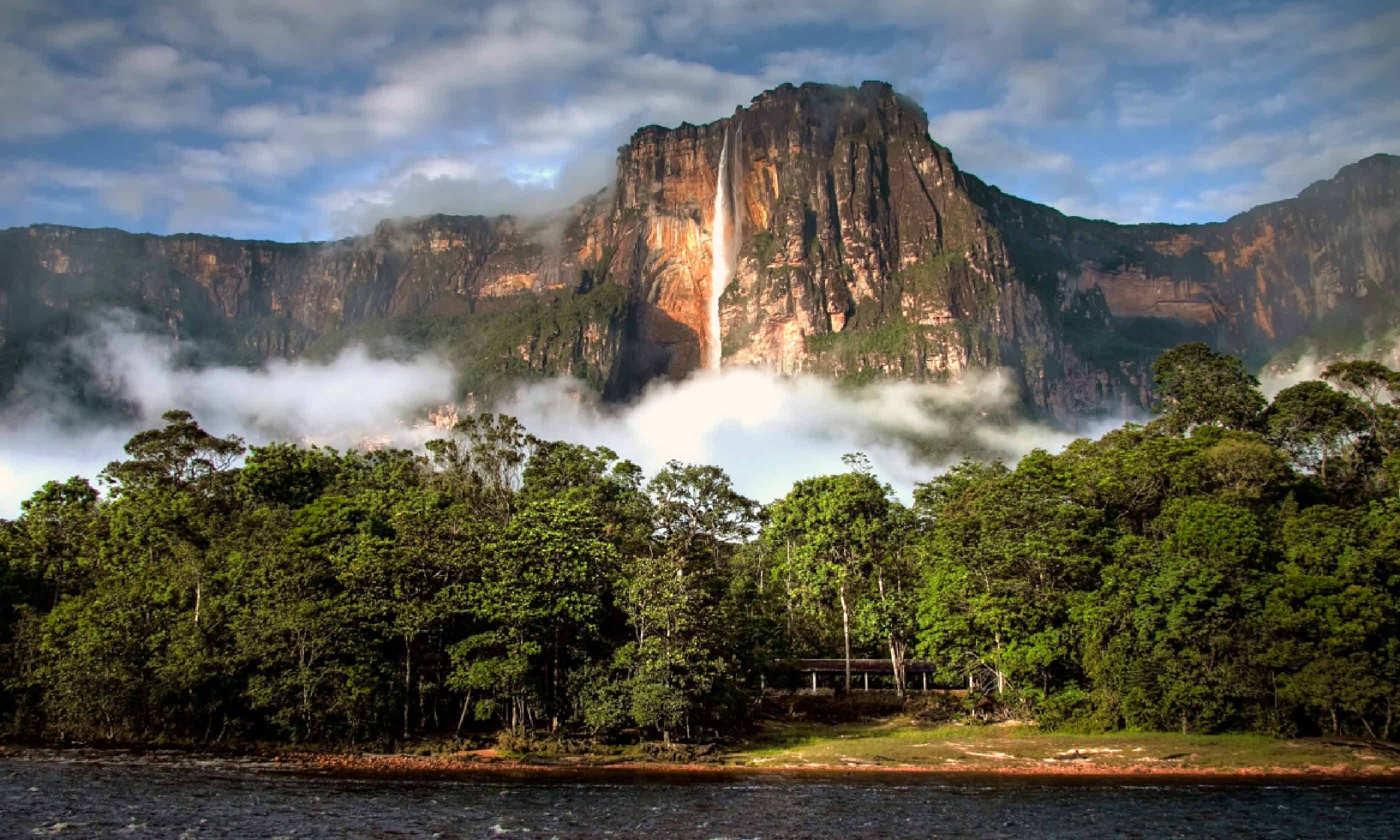 Angel Falls in morning light
Angel Falls in morning light
Venezuela has fallen off the travel radar in recent years, mirroring the country’s political and economic isolation during the Chavez and post-Chavez periods. It is, however, relatively straightforward to skip Caracas and fly into Ciudad Bolívar, the point of departure for a short flight and thrilling boat ride up to the bottom of 979m-high Angel Falls, the longest single drop of water in the world.
The overland trip into Guyana passes via Boa Vista and then involves a long, unpaved road journey up to Georgetown. It pays to break the journey at the Atta Rainforest Lodge, a jungle retreat in the heart of the 3,710 sq km Iwokrama wilderness reserve to see butterflies, monkeys, agoutis and lots of birds including the cock of the rock.
Georgetown, a former plantation settlement, is a very Caribbean city with lots of wooden houses, the old Bourda Cricket Club ground and the bustling Stabroek market, where the Demerara River flows under the holey floorboards.
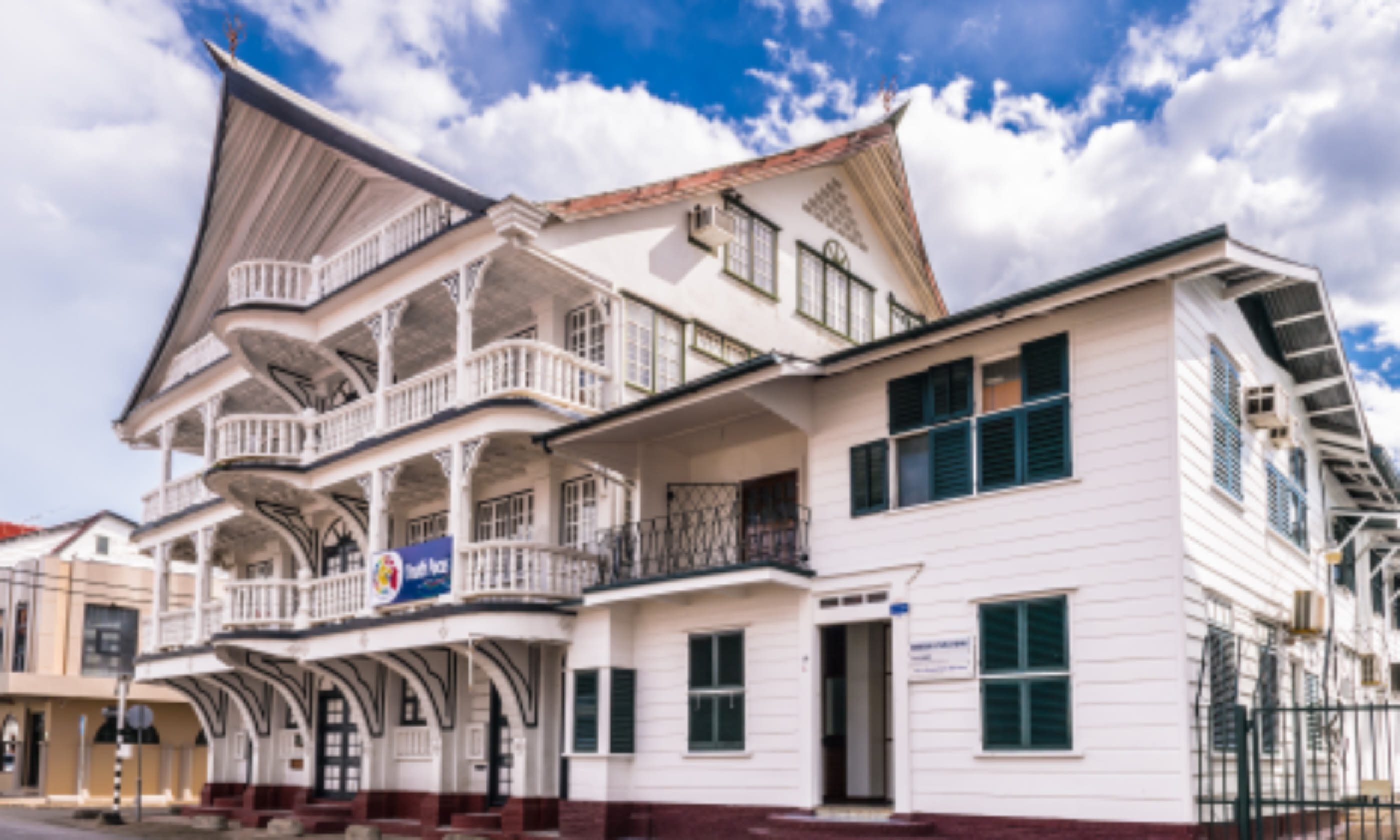 Paramaribo, Suriname (Shutterstock)
Paramaribo, Suriname (Shutterstock)
The coast road leads across lots of rivers all the way to Suriname, the former Dutch colony. Paramaribo, the capital, is approached by roads lined with churches raised on stilts to prevent any flood damage, modern factories and Chinese supermarkets, swastika-bearing Hindu temples and mosques topped by crescent moons. There’s a real cosmopolitan flavour here, and the capital has some of the best-preserved colonial buildings in all South America.
The final leg of the trip – now in EU territory – passes via the atmospheric ruined penitentiary Devil’s Island and the Guiana Space Centre before arriving in Cayenne, the capital of French Guiana; a fascinating museum, excellent French-influenced cuisine and a handful of historic sites make this a curious, but comfortable conclusion to a memorable road trip.
Pampas & Playas: Paraguay
Duration: 7 days
Best for: Beaches, horseriding, ranches, gastronomy
Route: Carmelo > Colonia > Montevideo > Cabo Polonia > Inland
With as much claim on tango and gaucho culture as its big southern neighbour, and with a proud African heritage that links it with its even bigger northern one, Uruguay is an underrated, traveller-friendly country. Its Atlantic beach resorts have already generated dozens of features in the fashion magazines, but beyond posing Punta del Este there are many other attractions.
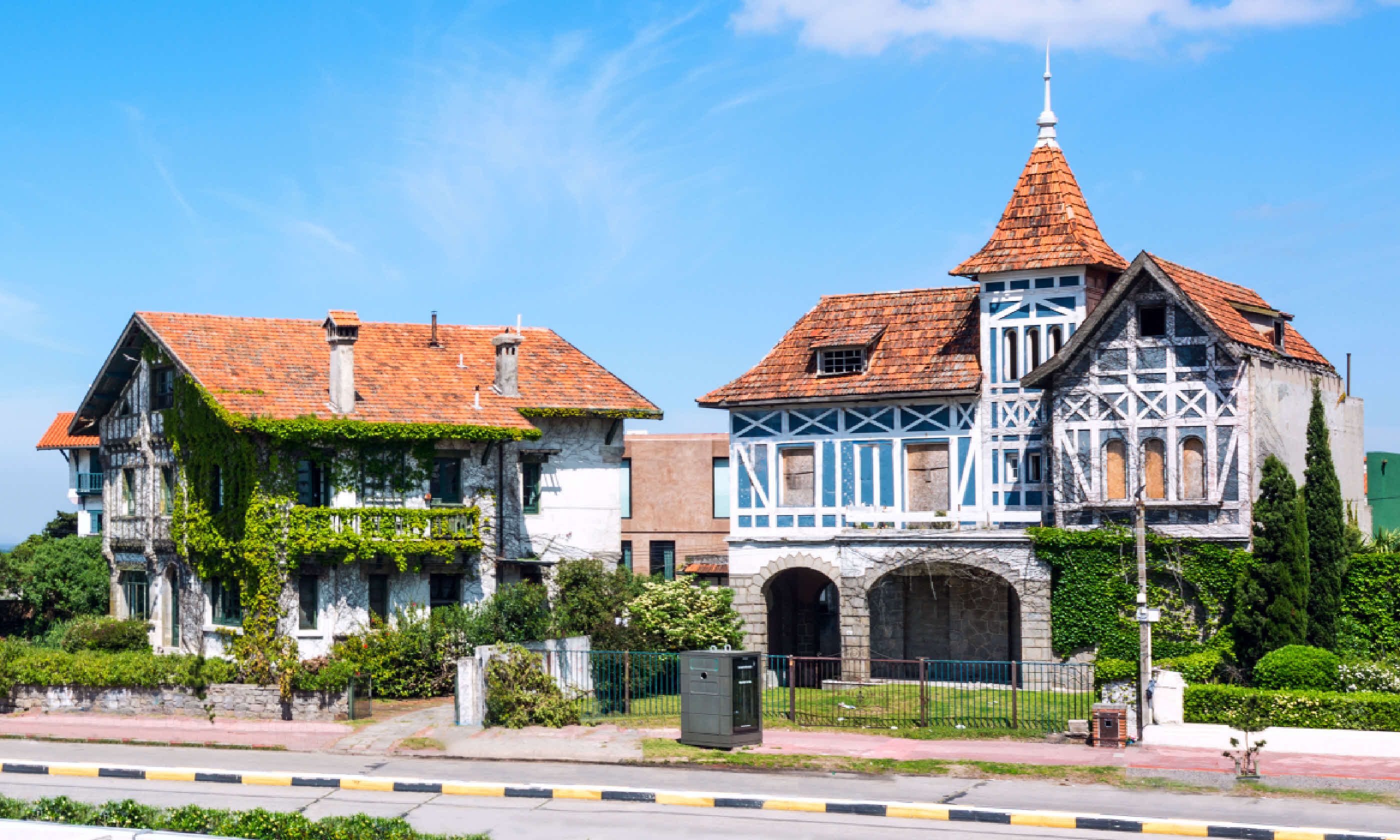 Rambla in the Carrasco neighborhood, Montevideo (Shutterstock)
Rambla in the Carrasco neighborhood, Montevideo (Shutterstock)
This itinerary starts at Carmelo, on the east bank of the River Plate. A wine-growing area easily reachable by ferry from Buenos Aires, it’s a natural departure point for a trip along the river via Colonia – Uruguay’s best-preserved old town and a UNESCO World Heritage site – and the charming capital, Montevideo.
Take a good look around the historic centre and do a long walk around the coast if you need to stretch your legs, but make time for the atmospheric old wrought-iron Mercado del Puerto (Port Market), which is full of bars and restaurants, with local
candombe musicians performing as they walk through with their drums.
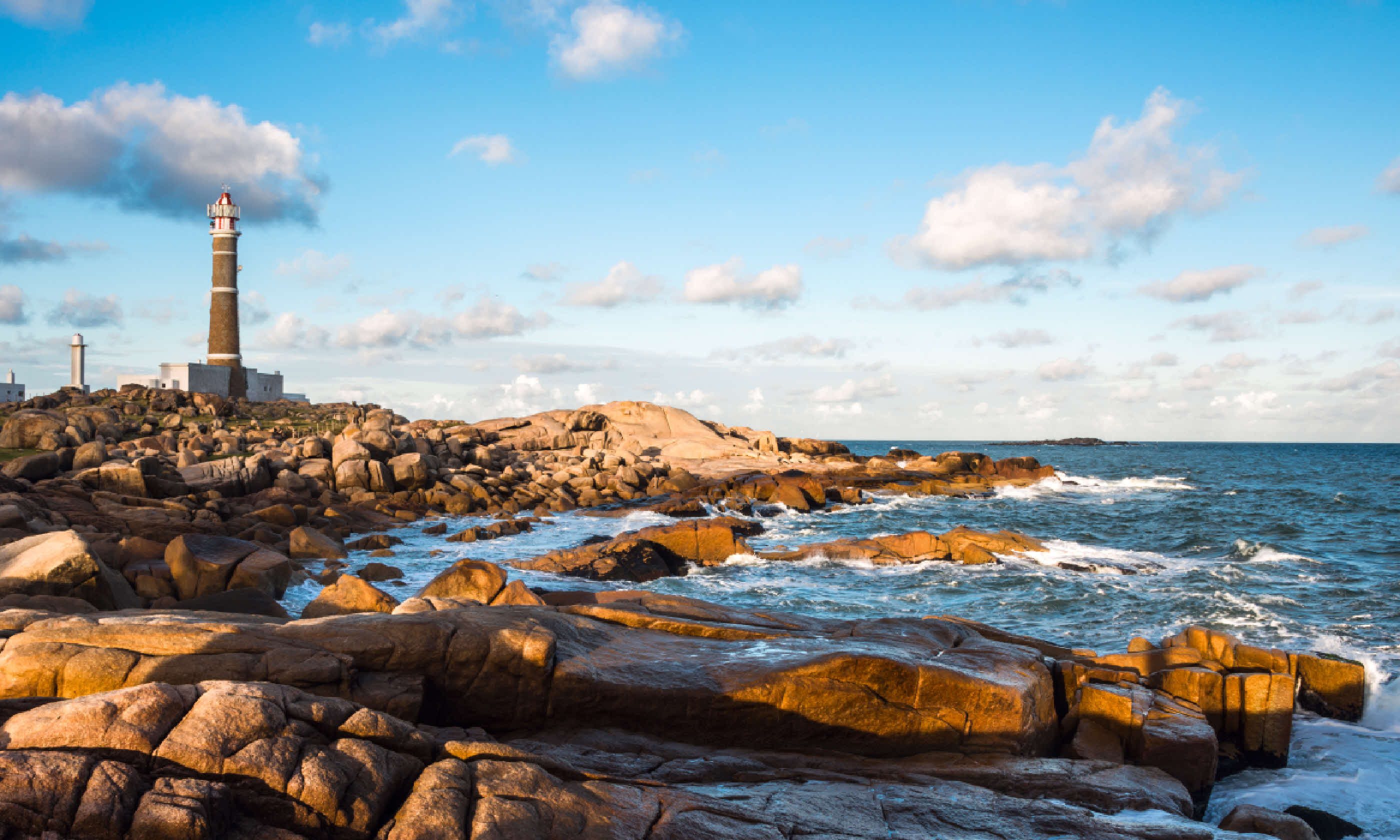 Lighthouse in Cabo Polonio, Rocha
Lighthouse in Cabo Polonio, Rocha
A good highway takes you to Punta del Este, by way of the part-Moorish, part Gaudí-esque Casapueblo, a remarkable house-turned-hotel that seems to tumble down the cliff . Punta itself has good beaches, but the scenes at La Barra and, further along, José Ignacio, are far hipper. Some of South America’s best restaurants are to be found here.
Up the coast, the towns of La Paloma, La Pedrera and bosky Cabo Polonio are less pretentious than the resort areas, and there’s excellent camping at the latter. Wrap up with a trip inland via gaucho country to sleepy Garzon, where there is a beautiful five-room hotel and a fine restaurant – also called Garzon – run by Argentine chef Francis Mallmann. Saddle up a criollo horse after siesta and explore the pampas, looking out for rheas and other birds as you ride.
Gran Chaco & the 'other' Pantanal: Paraguay
Duration: 16 days
Best for: Wildlife, birdlife, 4WD exploring
Route: Asunción > Villa Ygatimí > Laguna Capitan > Fuerte Olimpo
Landlocked and lacking many of the photogenic landscapes – and just about all the luxuries – offered by its neighbours, Paraguay is South America’s rough-edged reject. Its draws are its strange history – from quasi-feudal oligarchy to neo-fascism; its diverse ethnic groups (including the Guarani natives and the Mennonites); and its genuine wildness. The main challenge is getting around, and a 4WD vehicle and private driver-guide are highly recommended if you want to do this 2,500km round-trip inside two weeks.
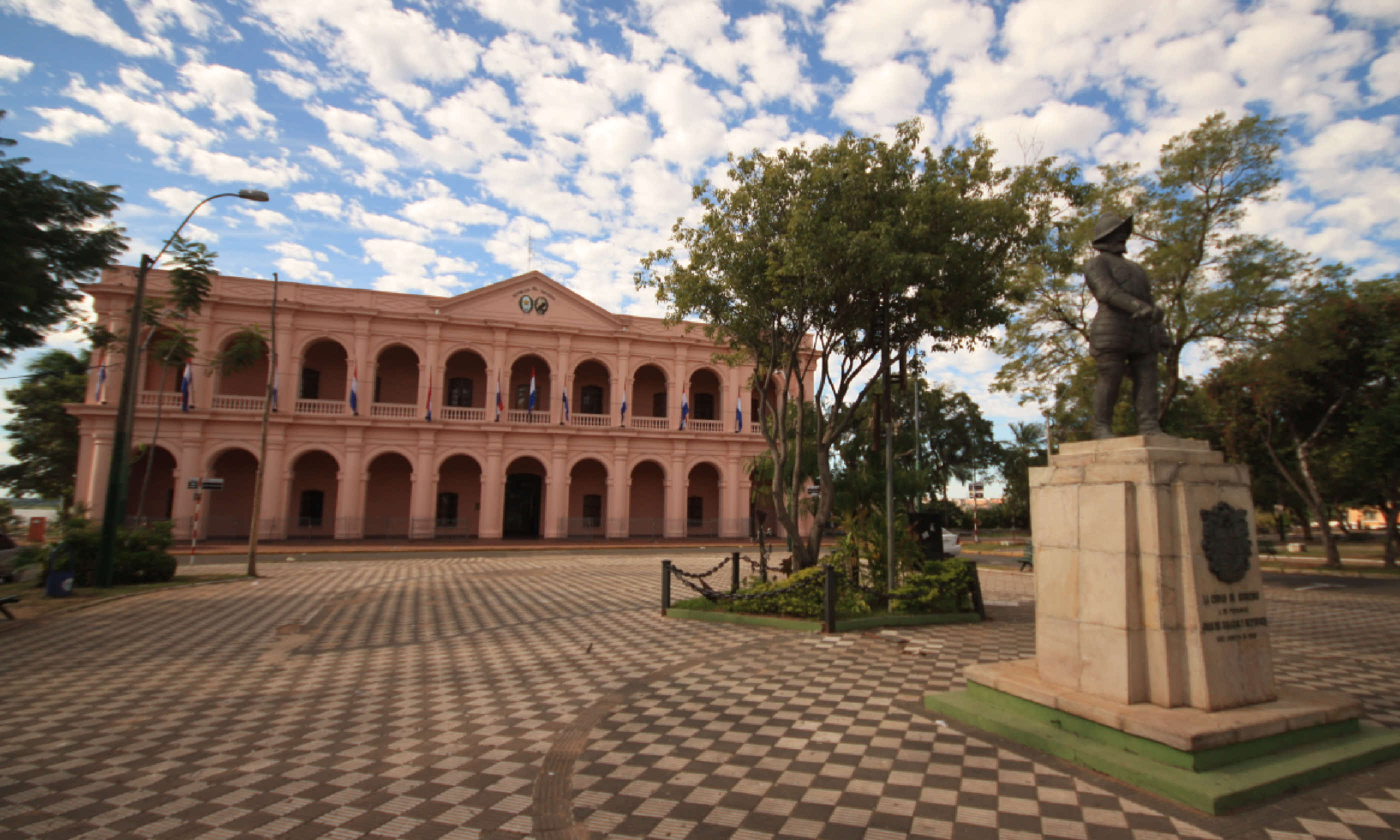 Asunción (Shutterstock)
Asunción (Shutterstock)
Asunción is more like a backwater town than a capital city, but it has some elegant civic buildings and good museums.
It’s just over four hours on a decent road to Villa Ygatimí and the 700 sq km Mbaracayú Biosphere Reserve. Run by the Fundación Moisés Bertoni, this model reserve is listed by the WWF as one of the planet’s 100 most important sites for biodiversity. Comprising Atlantic Forest and
cerrado (savannah), it’s home to more than 400 bird species (including the endangered black-fronted piping-guan) and many mammals. There is also a resident Aché indigenous tribe, who are allowed to hunt using traditional methods.
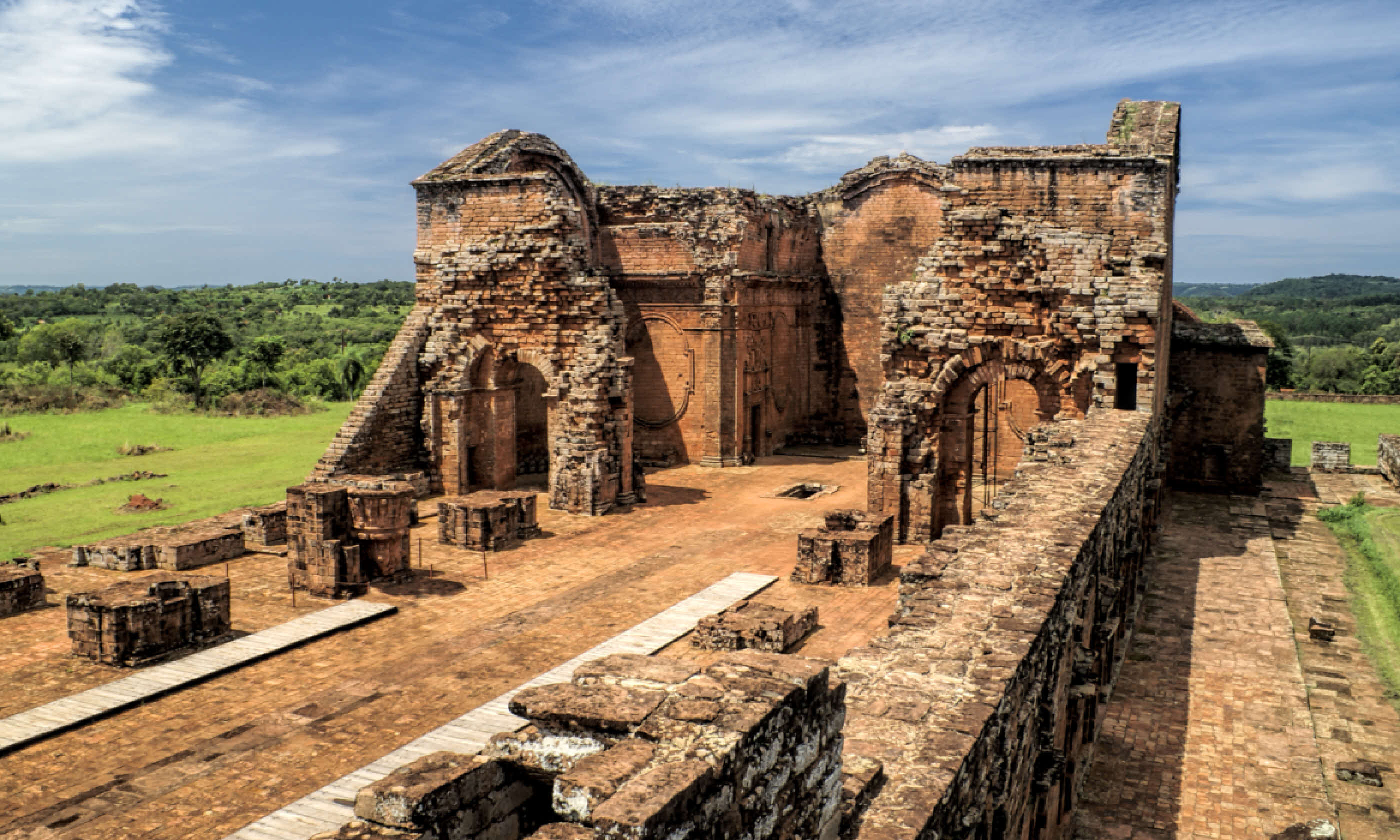 Jesuit ruins in Paraguay
Jesuit ruins in Paraguay
From here, the road heads west into the hot, dry, sparsely populated lowlands of the Gran Chaco. The lakelands north of Filadelfia are known for their abundant birdlife. Migratory birds, including flamingos, can be seen in large numbers at Laguna Capitan, one of the more accessible lakes, and at Laguna General Díaz, one of the largest. Horseriding can be arranged on estancias in the Chaco.
The riverside town of Fuerte Olimpo is the gateway to the Pantanal, the largest wetlands in the world, shared by Bolivia, Brazil and Paraguay. Motorboats ferry visitors out into the channels to see caiman, capybara, storks and herons, and to fish for piranhas. With careful planning, it’s possible to meet indigenous groups, such as the Chamacocos-Ishir, and to visit the Mennonite colony of Filadelfia.
















